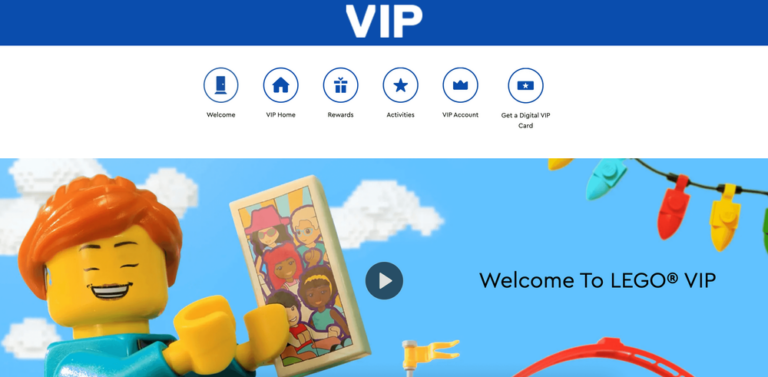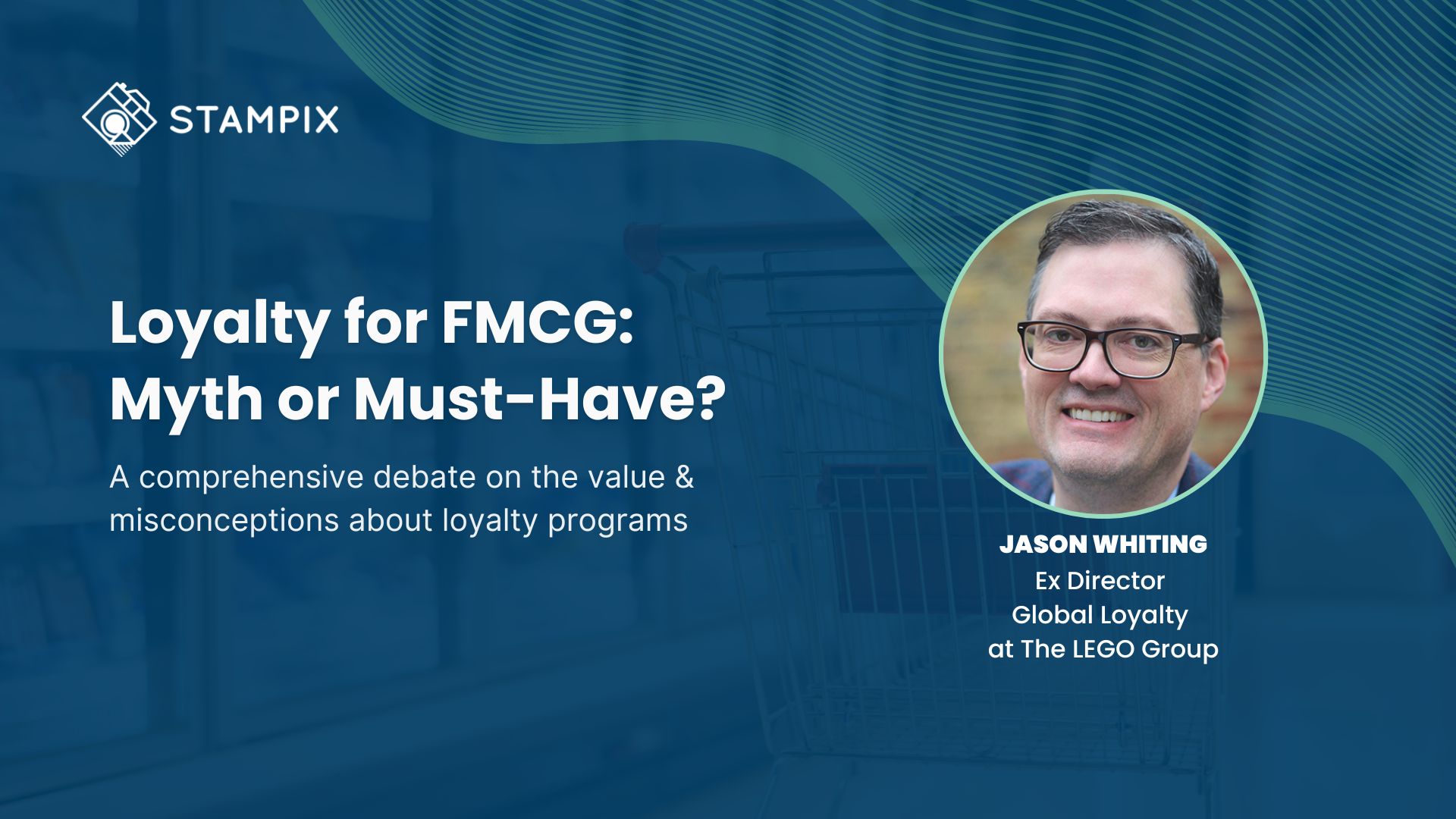In the evolving landscape of digital marketing, the ability to capture and leverage first-party data has become paramount for brands. With the decline of third-party cookies and the rise of digital ad fraud, companies are increasingly turning to loyalty programs to build direct relationships with their customers. Jason Whiting’s insights from various sources, including his extensive experience in digital marketing and his role in the development of LEGO’s Insider program, provide valuable guidance on how brands can effectively use loyalty programs to enhance their marketing strategies.
It was our pleasure to host Jason and pick his brain on our recent webinar Loyalty for FMCG: Myth or Must-Have.
Importance of First-Party Data in a Cookie-Less World
The demise of third-party cookies has forced brands to rethink their data collection strategies. According to Jason Whiting, loyalty programs offer a unique opportunity to gather first-party data directly from customers. This data is not only more reliable, but also enables brands to create personalised experiences that foster deeper customer loyalty. Whiting emphasises the value of zero-party data, where customers actively share their preferences and interests, as this can lead to a more engaging and reciprocal relationship between the brand and the consumer.
Whiting points out that the shift away from third-party cookies, while initially seen as a challenge, has actually encouraged brands to develop more direct and meaningful relationships with their customers. This direct dialogue helps to build loyalty that goes beyond the transactional aspects of loyalty programs, creating a stronger and more personal connection with the brand.
Balancing Marketing Spend: New Users vs. Existing Customers
One of the critical challenges that brands face is balancing their marketing spend between acquiring new users and nurturing existing customers. Whiting, drawing from his experience overseeing digital paid media spend, stresses the importance of maintaining a balanced marketing mix. While it may be tempting to shift the budget towards maintaining contact with confirmed customers to avoid digital ad fraud, he argues that neglecting new user acquisition can be detrimental to long-term growth. Brands need to focus on both acquiring new customers and retaining existing ones to ensure sustained growth.
Effective loyalty programs should aim to engage both new and existing customers, providing value and incentives that cater to their specific needs and preferences. While brands with a higher purchase frequency, basket size or more complex buying process are more likely to benefit from a loyalty program, it seems there isn’t a golden rule as to when or whether such a program is advisable.
Enhancing Mental Availability Through Loyalty Programs
A key goal of loyalty programs is to enhance the mental availability of a brand. Whiting explains that loyalty programs should not just aim to remind customers of the brand but should strive to become the brand that is top-of-mind when making purchase decisions.
Whiting cites the example of 7-Eleven’s Seven Rewards program, which is designed around the convenience of its customers. By offering incentives related to gas purchases and ancillary products, the program ensures that 7-Eleven is the first brand customers think of when they need these products. This approach goes beyond simple retargeting and builds a deeper connection with the brand, making it a preferred choice for customers.

Case Study: The LEGO Insider Program
Jason Whiting’s work with LEGO’s Insiders program provides a compelling example of how a well-designed loyalty program can capture and leverage first-party data to enhance customer loyalty. The LEGO Insiders program is built on the core values of the brand, focusing on sparking creativity and enhancing the LEGO play experience rather than just overcoming price objections.
The Insiders program’s strategy was to focus on the shopper, recognising that the end user might be a different person than the shopper. For example, the needs and motivations of shoppers offering LEGO as a gift are vastly different from those of the child, who is the ultimate user of the product. By understanding these diverse needs, the Insiders program offers a range of rewards and varying points costs to meet the needs of different shoppers. Some might want to enhance the value of their gift, while others might simply want more LEGO bricks.
The LEGO Insiders program meets users where they are by allowing them to earn points for activities such as registering their sets. This approach not only engages customers but also pulls them into LEGO’s ecosystem, creating opportunities for deeper engagement and data collection. Also, collaborating with notable brands and pop culture has kept LEGO relevant for so long. Their collaborations with Harry Potter and Star Wars helped revenue grow by 17% last year alone.

Most major chains like Walmart and Target have LEGOs available for purchase. The big downside is no points are earned for purchases at a third-party retailer. This way LEGO misses the mark is by not allowing LEGOs purchased anywhere other than their website and official stores to be eligible for points.
Whiting also highlights the challenge of nurturing customer relationships across various platforms, including third-party marketplaces like Amazon. While Amazon offers unparalleled convenience and reach, brands should not rely solely on this platform for customer engagement. Instead, they should focus on building direct connections with their customers and nurturing these relationships regardless of where the purchase occurs.
Measuring the Effectiveness of Loyalty Programs
The effectiveness of a loyalty program will largely depend on its capability to offer products that genuinely excite members and drive repeat purchases.
“After one purchase, a customer has a 27% chance of returning to your store. That number increases if customers return for a second or third purchase, which grows to a 49% and 62% chance of making another purchase.” – Source: Smile.io
Loyalty programs should not be seen merely as a means to generate immediate sales but as a long-term strategy to build a loyal customer base. By focusing on metrics that reflect customer engagement, satisfaction, and retention, brands can better understand the impact of their loyalty programs and make informed decisions to enhance their effectiveness.
For the LEGO Insiders rewards program’s success is highlighted through several key metrics:
- Member Enrolment Rate: High enrolment rates show the program’s value proposition resonates
- Member Repeat Rate: Increased repeat transactions indicate effective customer retention.
- Redemption Rate: High rates show members find the rewards appealing, with many redeeming points for exclusive items.
- Active Member Rate: High engagement levels with members actively participating, ensuring the brand is top of mind.
- Customer Lifetime Value: Indicates long-term financial benefits from loyal customers.
- Profitability: Measures the financial impact of the program.
- Member Penetration: A significant portion of business comes from loyalty members, showcasing the program’s impact on overall sales.
Conclusion: Importance of Strategy & Data
In conclusion, capturing and leveraging first-party data through loyalty programs is essential for brands in the current digital marketing landscape. Jason Whiting’s insights underscore the importance of a balanced marketing approach, enhancing mental availability, and designing loyalty programs that align with the core values of the brand. By focusing on both new and existing customers and nurturing relationships across platforms, brands can build strong, long-lasting connections with their customers.
The LEGO Insiders program serves as a prime example of how a well-executed loyalty strategy can drive customer engagement and loyalty, ultimately contributing to the brand’s growth and success. Whiting emphasises the importance of agreeing on metrics that support the overall strategy upfront, and tracking these metrics to demonstrate the value of the loyalty program. This approach helps to avoid internal conflicts and ensures that the team is focused on achieving the desired business outcomes.
SIGN UP FOR THE WHITE PAPER
We didn't have time to answer all questions from the audience during the webinar. Subscribe to our Newsletter to receive an exclusive White Paper with the key insights and answers from the panelists.


